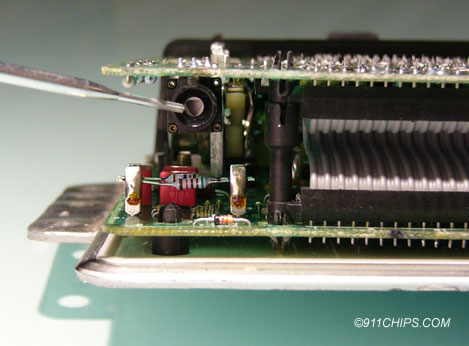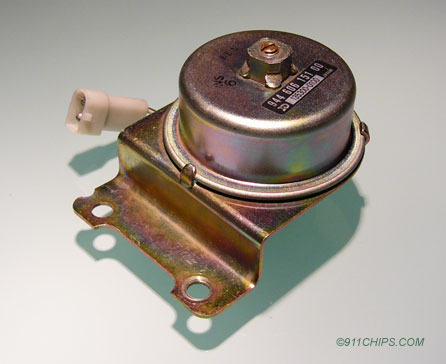Motronic Fuel Quality Switch

The
Motronic fuel quality switch is an eight position
rotary switch which adapts fuel mixture and ignition
timing for the quality of gasoline in the country
of operation. As climates vary throughout different
regions of the world, so does the quality of the
fuel. The switch is designed to counter engine running
problems and does not yield any appreciable performance
benefits. In fact, Bosch service documentation warns
"Unnecessary adjustment to the switch though,
leads to poor drivability, and particularly to "search"
during overrun or to increased fuel consumption,
in some cases even to engine damage." Porsche
option M 240 from the factory (version for countries
with inferior fuel) sets this switch to position
4, reducing ignition timing advance from 4000 rpms and up by 2.79°.
That
said, it is located along the side of the DME under
a plastic plug on the DME's cover. With the DME
in your car, the FQS can be accessed from under
the driver's seat from the rear. A small three sided
tool is needed to fit into the switch and rotate
it. A small properly sized flathead jeweler's screwdriver
or a trimmed down golf tee works well. Adjustments
are possible via the switch to assist in combating
issues such as predetonation under extreme conditions.
When performing any adjustments, do it with your
ignition switch full off. Changing the FQS with
the engine running produces no effect or change
until the next boot up of the DME unit. Full counterclockwise
represents the stock position. If your car suffers
from predetonation such as from extreme heat conditions
(i.e. 110+ degrees F with your A.C. on) trying position
4 or 5 can help alleviate the condition. If your
car suffers from what appears to be a rich running
condition, experimenting with position 3 may help.
Switch
Position |
Fuel
Correction |
Ignition
Correction* |
0 |
0 |
0 |
1 |
+3.1% |
0 |
2 |
+6.3% |
0 |
3 |
-3.9% |
0 |
4 |
0 |
-2.79° |
5 |
+3.1% |
-2.79° |
6 |
+6.3% |
-2.79° |
7 |
-3.9% |
-2.79° |
* correction reduction effective from 4000 rpm up
Due to lower air pressures, fuel mixtures run richer at higher altudes. If you are at extreme altitudes and experience
a rich running condition, you may want to check
the operation of your altitude sensor located alongside
the DME. A simple on/off switch, it should only
read closed at altitudes above 1000 meters (3250
feet), decreasing the injection pulse width by 6%, providing a corresponding reduction in the overall fuel mixture.

Next - The DME Relay
